Numerical Optimization of Mini Centrifuge Modelling Test Design of Excavation Unloading Influence on Existing Tunnel Controlled by Partition Piles
Abstract
:1. Introduction
2. Numerical Simulation
2.1. Description of the Test
2.2. Numerical Model
2.3. Result
3. Design of the Centrifuge Model Test
3.1. Layout of Test Materials and Components
3.2. Sensor Arrangement
3.3. Test Procedure
4. Optimization of the Test Design
4.1. Selection of Test Materials
4.2. Excavation Simulation
4.3. Optimization of Measurement
5. Conclusions
- (1)
- In the test, the magnesium-aluminum alloy materials were used to model the structural members, and its elastic modulus was close to that of common reinforced concrete, which can simulate the actual project more accurately.
- (2)
- Due to the high accuracy of tunnel displacement measurement, the high accuracy digital image correlation (DIC) was selected to measure the horizontal and vertical displacement of the tunnel.
- (3)
- In this test, the excavation was simulated by discharging the ZnCl2 solution, and the actual excavation speed was simulated by a flow control valve.
- (4)
- The numerical simulation results show that the embedded partition piles can play a better role in controlling the displacement and internal force of the tunnel than the non-partition piles and the non-embedded partition piles. Numerical simulation results provide a basis for the design of centrifuge model experiments.
Author Contributions
Funding
Institutional Review Board Statement
Informed Consent Statement
Data Availability Statement
Conflicts of Interest
References
- Zheng, G.; Wang, F.J.; Du, Y.M.; Diao, Y.; Lei, Y.W.; Cheng, X.S. The Efficiency of the Ability of Isolation Piles to Control the Deformation of Tunnels Adjacent to Excavations. Int. J. Civ. Eng. 2018, 16, 1475–1490. [Google Scholar] [CrossRef]
- Ying, H.W.; Li, T.; Yang, Y.W. Analysis on the effect and engineering application of protecting adjacent buildings with partition wall of deep excavation. Chin. J. Geotech. Eng. 2011, 33, 1123–1128. [Google Scholar]
- Ma, S.K.; Fu, X.X.; Lu, H.; Huang, Z.; Zhang, J.B. A combined support method of partition pile and diaphragm wall for protection of buildings adjacent to deep excavation. Arab. J. Geosci. 2021, 14, 2005. [Google Scholar] [CrossRef]
- Marta, D. Tunnel complex unloaded by a deep excavation. Comput. Geotech. 2001, 28, 469–493. [Google Scholar]
- Shi, J.W.; Ng, C.W.W.; Chen, Y.H. Three-dimensional numerical parametric study of the influence of basement excavation on existing tunnel. Comput. Geotech. 2015, 63, 146–158. [Google Scholar] [CrossRef]
- Zheng, G.; Du, Y.M.; Diao, Y. Optimization analysis of deformation control of existing tunnel outside excavation by partition pile. Chin. J. Rock Mech. Eng. 2015, 34, 3499–3509. [Google Scholar]
- Chen, R.P.; Meng, F.R.; Li, Z.C.; Ye, Y.H.; Hu, Q. Excessive displacement and protective measures of metro tunnel near deep excavation. J. Zhejiang Univ. (Eng. Ed.) 2016, 50, 856–863. [Google Scholar]
- Xu, X.B.; Hu, Q.; Zeng, L.B.; Wang, J.C.; Wang, Z. Model experimental study on the influence of partition pile on side tunnel of excavation in dry sand foundation. Chin. J. Rock Mech. Eng. 2020, 39, 3015–3022. [Google Scholar]
- Wei, H.W.; Yang, F.; Luo, W.; Kui, Y.; Lu, Z. Model experimental study on the influence of excavation on the existing tunnel on the side. J. Shandong Constr. Univ. 2020, 35, 15–22. [Google Scholar]
- Zeng, X.X.; Ding, W.X.; Peng, L.; Xu, C.J. Deformation analysis of partition pile position on adjacent existing metro tunnel during deep excavation. Chin. Sci. Technol. Eng. 2017, 17, 296–301. [Google Scholar]
- Fu, Z.F.; Yi, Y.L.; Zhou, W.S.; Pan, H.B.; Luo, X.D. Influence of parameters of external partition pile in excavation on deformation of adjacent existing metro tunnel. Chin. Saf. Environ. Eng. 2021, 28, 57–63. [Google Scholar]
- Xu, C.J.; Zhu, H.L.; Long, L.B.; Jiang, Y.L.; Hu, Q. Analysis of protection effect of deep excavation using partition pile on existing tunnel outside the pit. Chin. Disaster Prev. Control. Tunn. Undergr. Eng. 2019, 1, 119–126. [Google Scholar]
- Cheng, Y.C.; Gong, D.K.; Ye, J.N.; Zheng, X. Analysis of partition effect of partition pile outside excavation on horizontal displacement of soil. Chin. J. Disaster Prev. Mitig. Eng. 2019, 39, 478–486. [Google Scholar]
- Xu, C.J.; Zeng, X.X.; Qi, X.K.; Zhao, X.S.; Peng, L. Study on protection effect of arched double-row partition piles on existing tunnel. Chin. J. Disaster Prev. Mitig. Eng. 2018, 38, 633–641. [Google Scholar]
- Gong, C.; Kang, L.; Liu, L.; Lei, M.; Ding, W.; Yang, Z. A novel prediction model of packing density for single and hybrid steel fiber-aggregate mixtures. Powder Technol. 2023, 418, 118295. [Google Scholar] [CrossRef]
- Zhou, H.; Hu, Q.; Yu, X.; Zheng, G.; Liu, X.; Xu, H.; Yang, S.; Liu, J.; Tian, K. Quantitative bearing capacity assessment of strip footings adjacent to two-layered slopes considering spatial soil variability. Acta Geotech. 2023. [Google Scholar] [CrossRef]
- Ng, C.W.W.; Shi, J.W.; Chen, Y.H. Three-dimensional centrifuge modelling of basement excavation effects on an existing tunnel in dry sand. Can. Geotech. J. 2013, 50, 874–888. [Google Scholar] [CrossRef]
- Huang, X.; Huang, H.W.; Zhang, D.M. Centrifuge modelling of deep excavation over existing tunnels. Proc. Inst. Civ. Eng.-Geotech. Eng. 2014, 167, 3–18. [Google Scholar] [CrossRef]
- Song, G.Y.; Marshall, A.M. Centrifuge study on the use of protective walls to reduce tunnelling-induced damage of buildings. Tunn. Undergr. Space Technol. 2021, 115, 104064. [Google Scholar] [CrossRef]
- Chen, R.P.; Ashraf, A.; Meng, F.Y. Centrifuge model test study on the influence of excavation on side tunnel and the action of partition wall. Chin. J. Geotech. Eng. 2018, 40, 6–11. [Google Scholar]
- Finno, R.J.; Calvello, M. Supported Excavations: Observational Method and Inverse Modeling. J. Geotech. Geoenviron. Eng. 2005, 131, 826–836. [Google Scholar] [CrossRef]
- Schanz, T.; Vermeer, P.A. On the Stiffness of Sands. In Pre-Failure Deformation Behaviour of Geomaterials; Thomas Telford Publishing: London, UK, 1998; pp. 383–387. [Google Scholar]
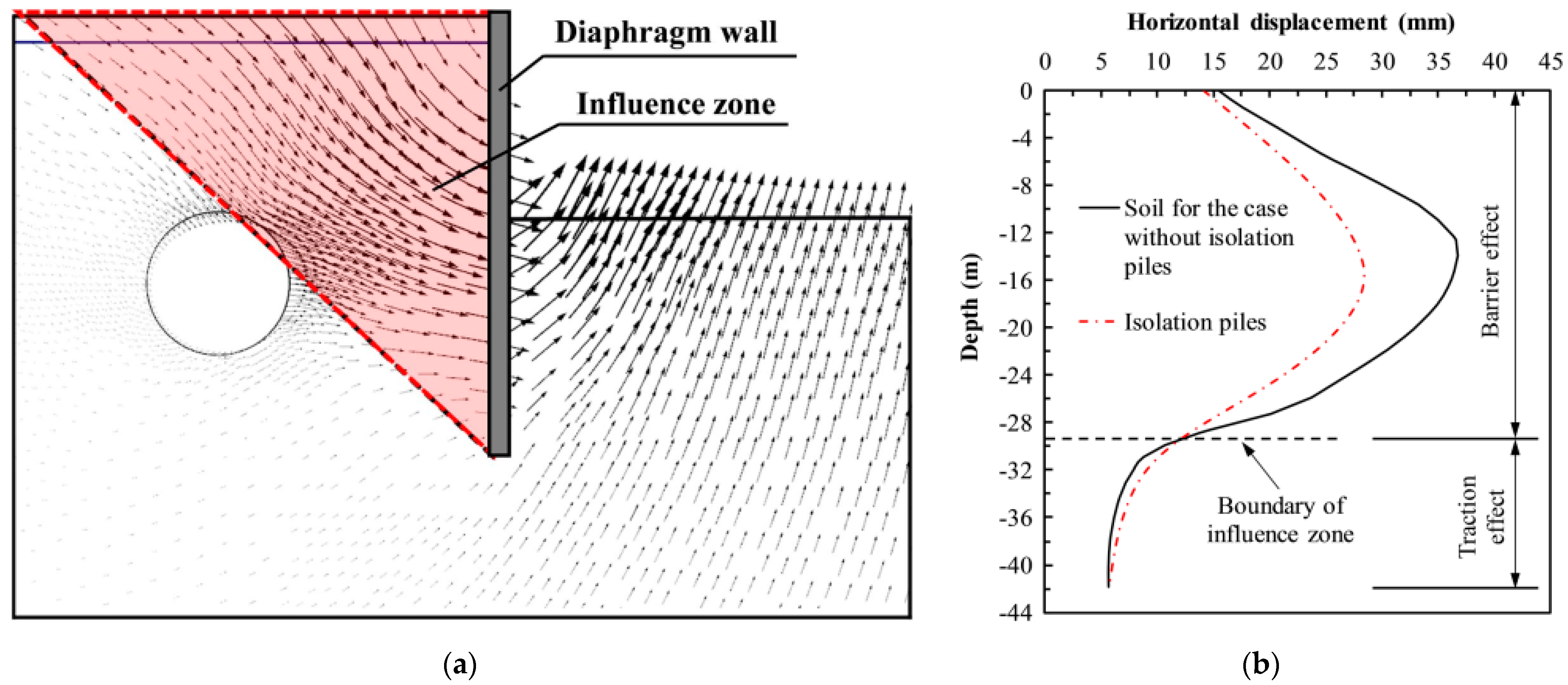


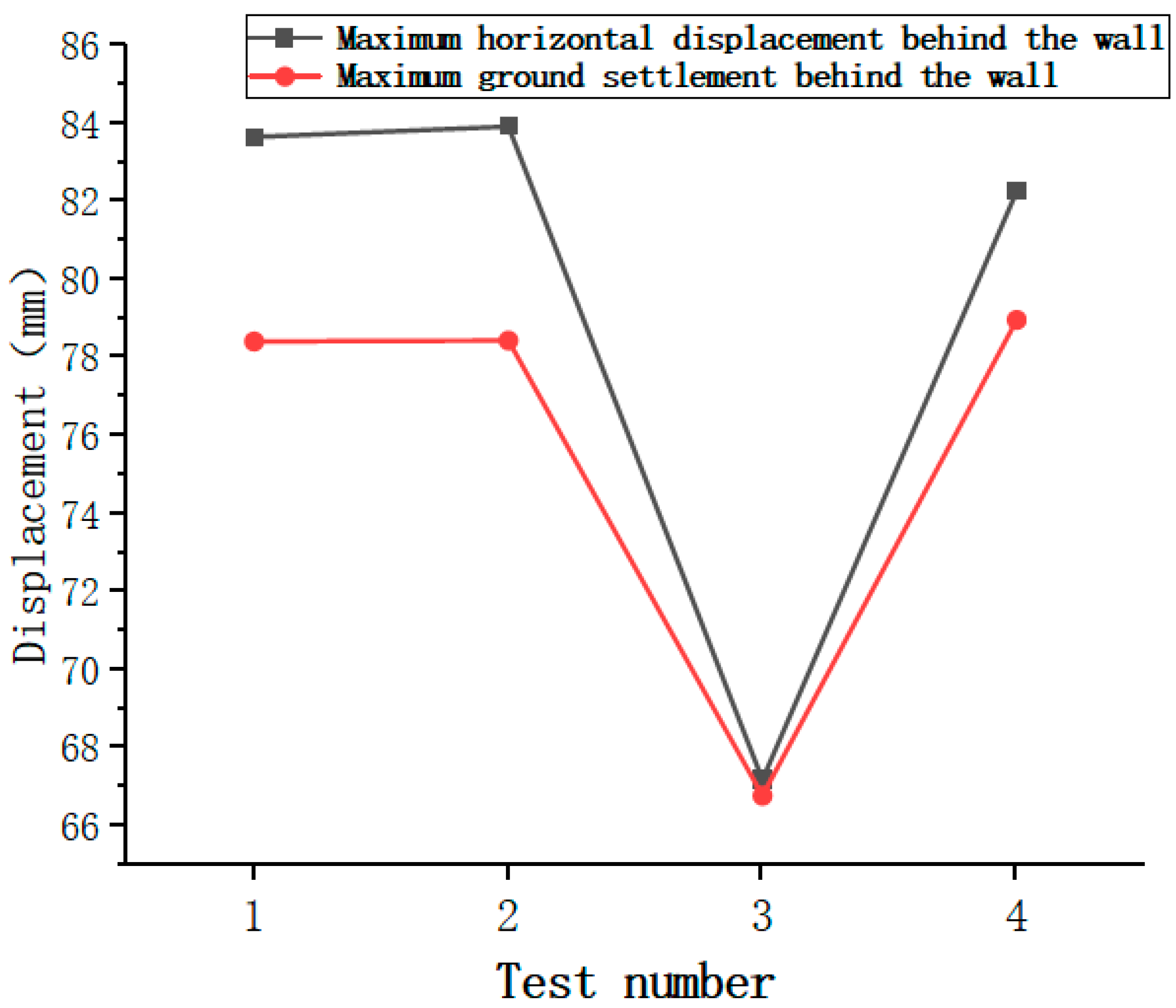
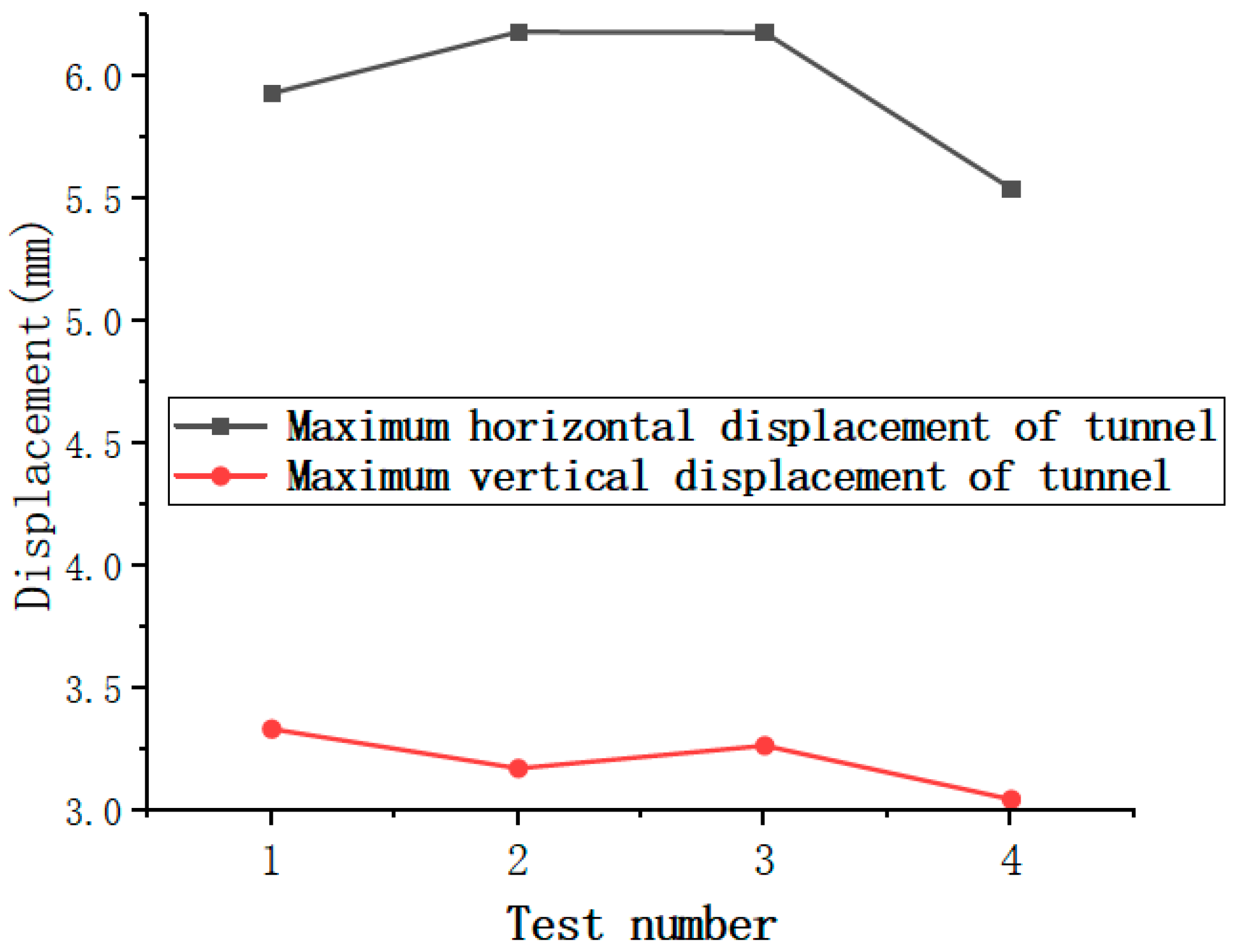
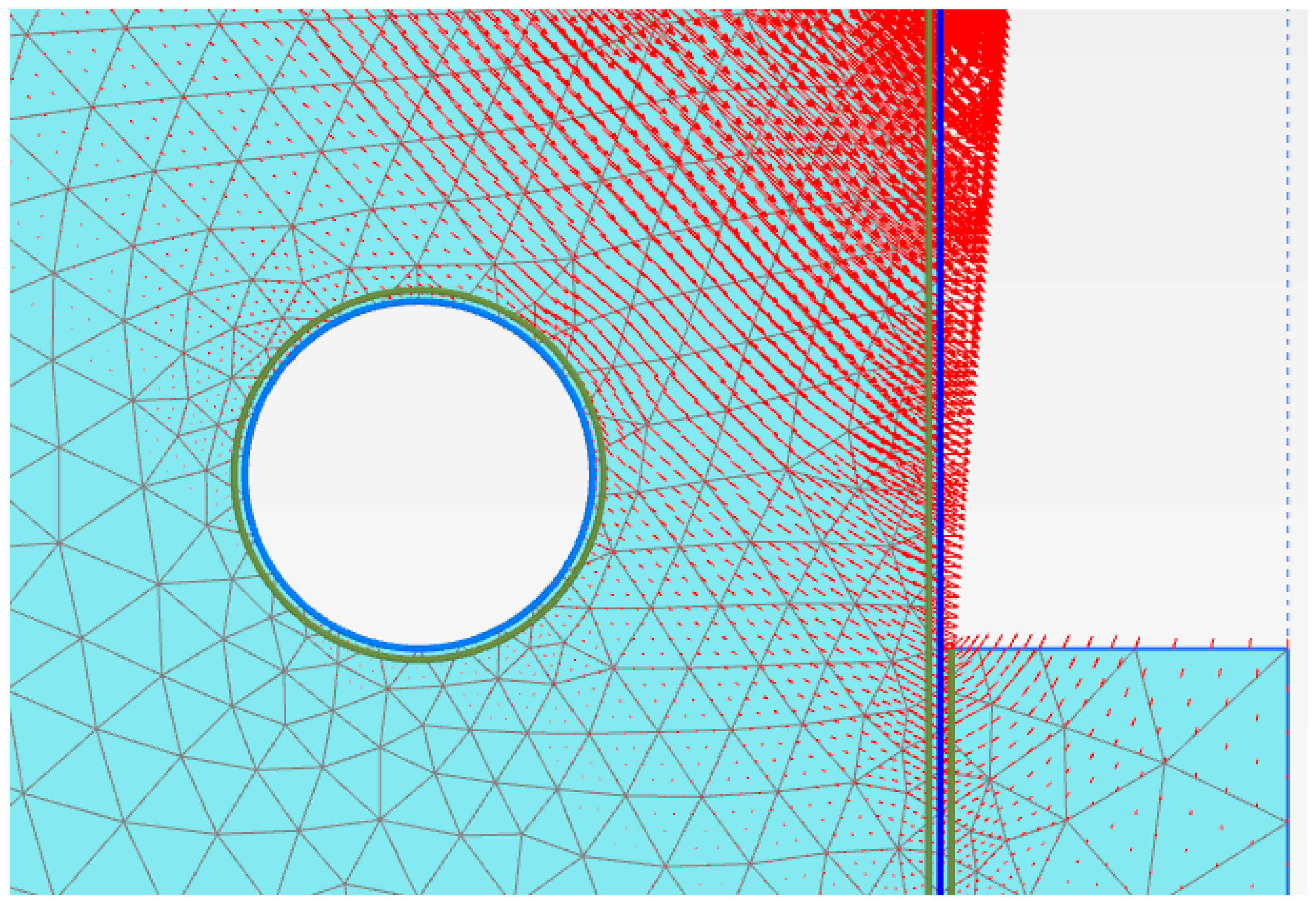
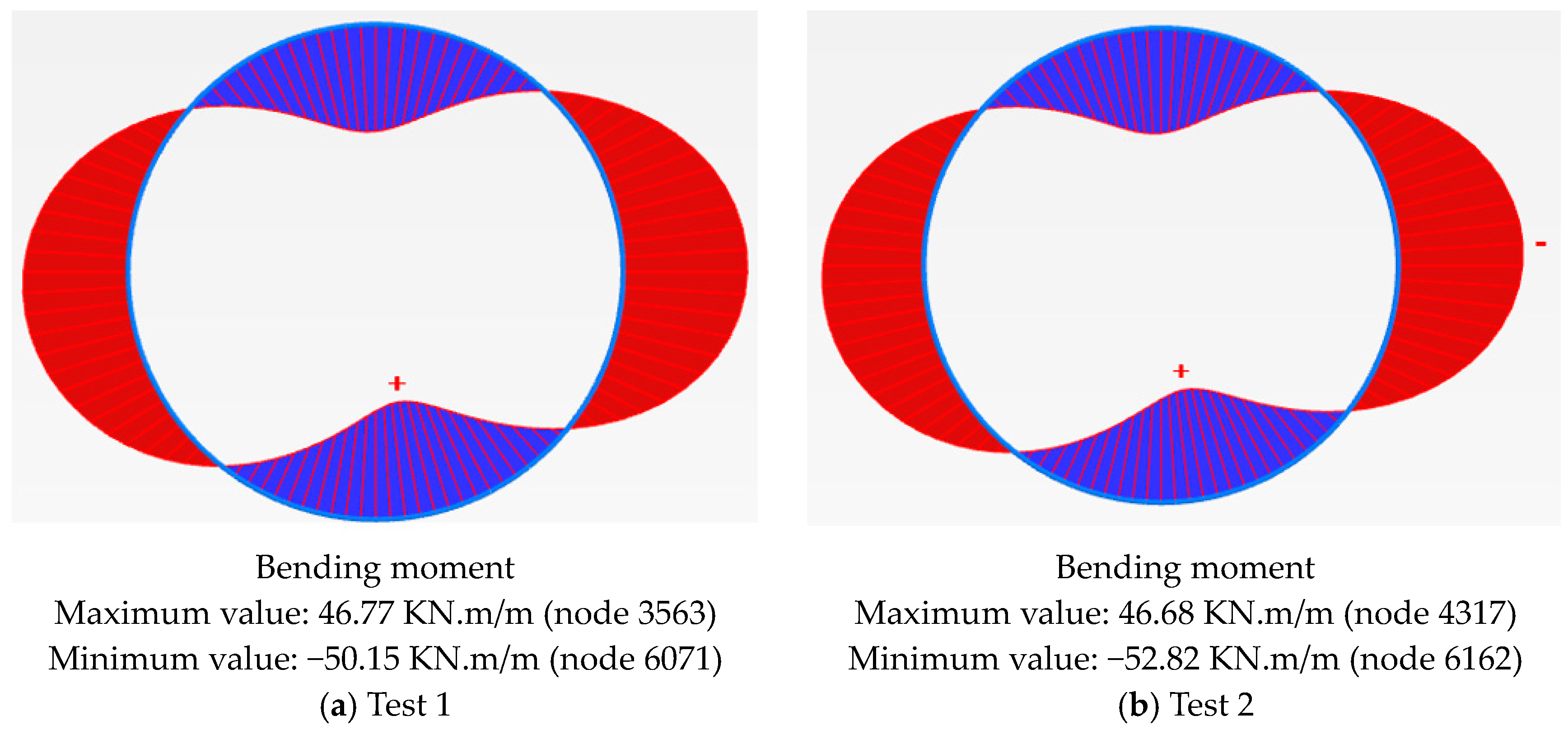
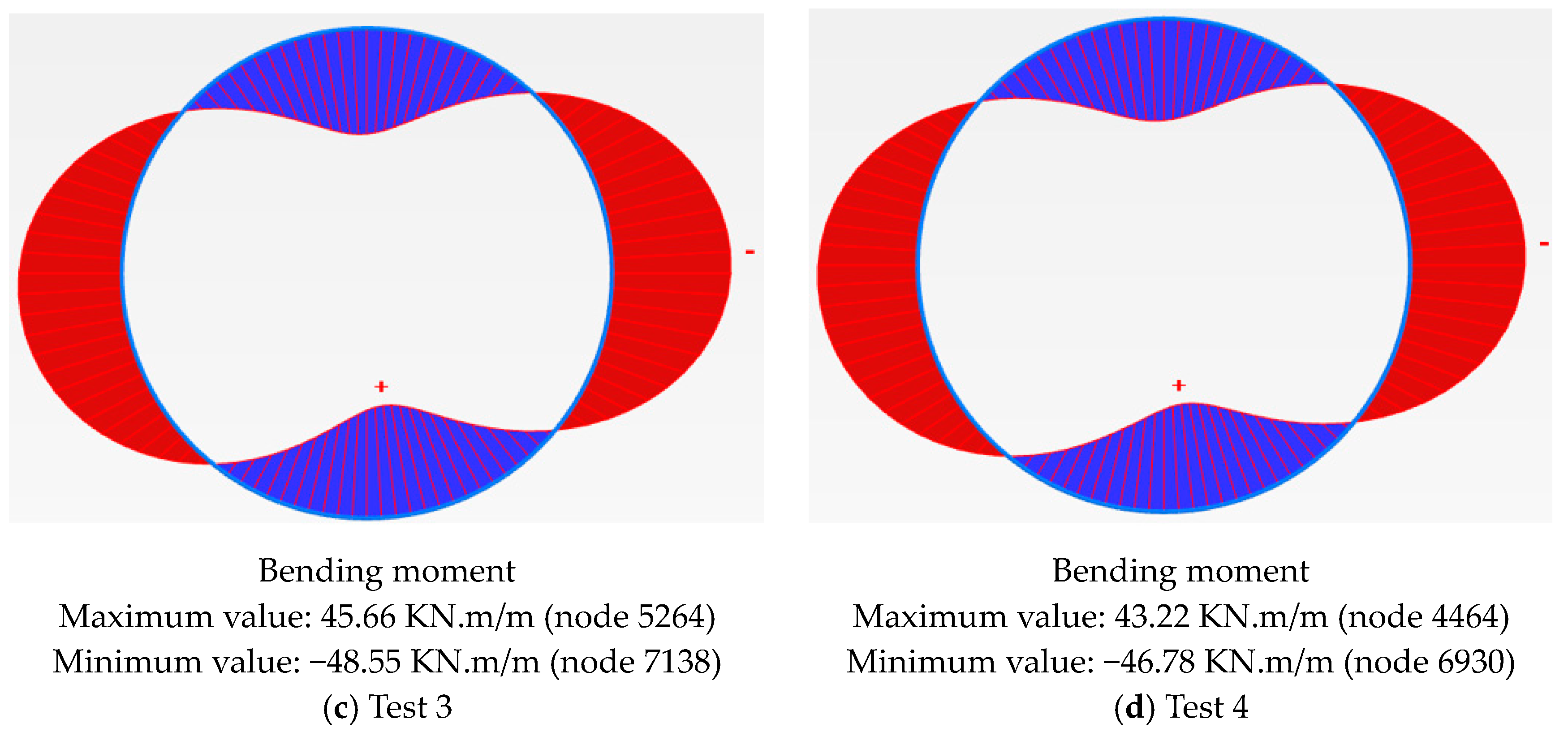
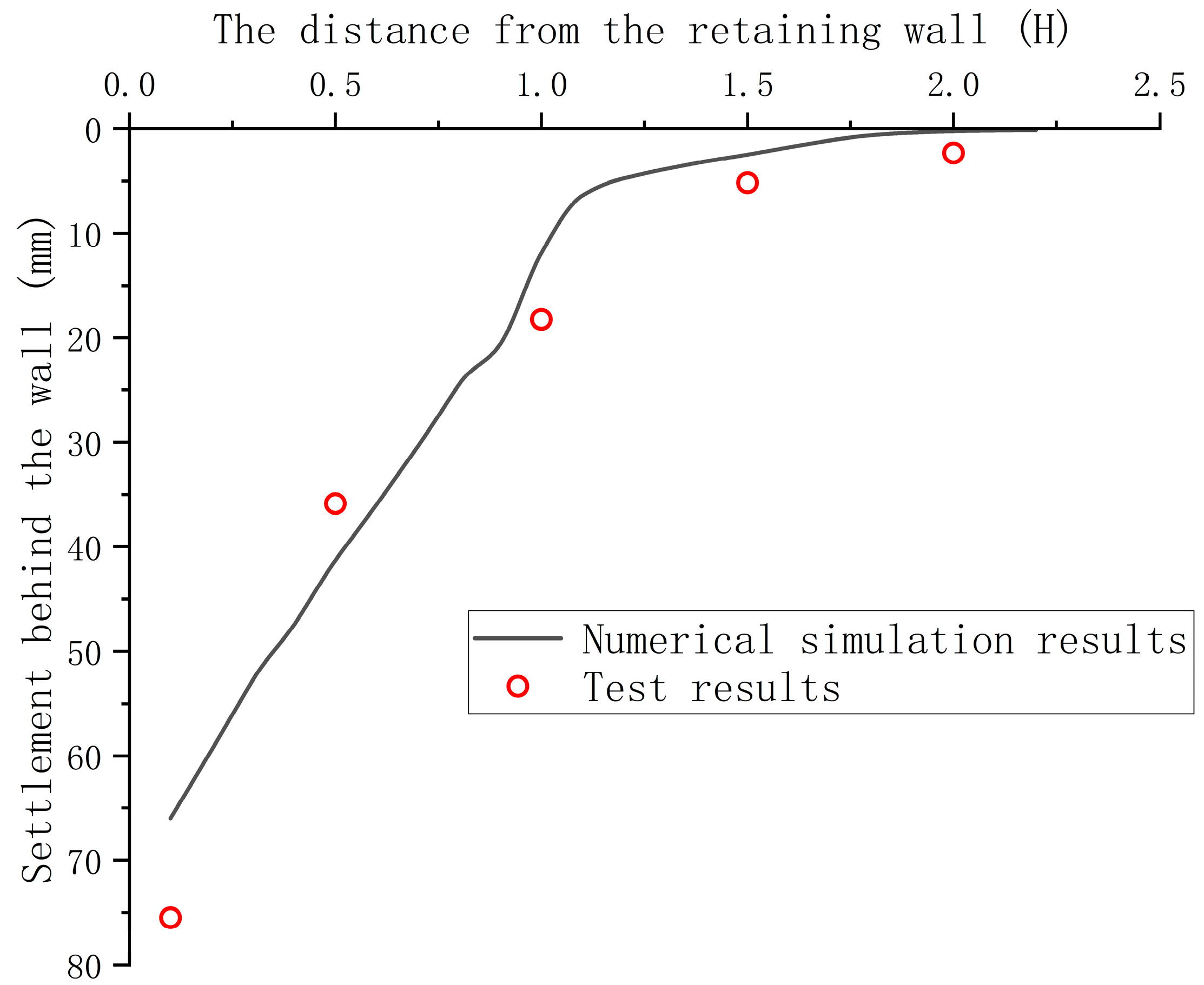

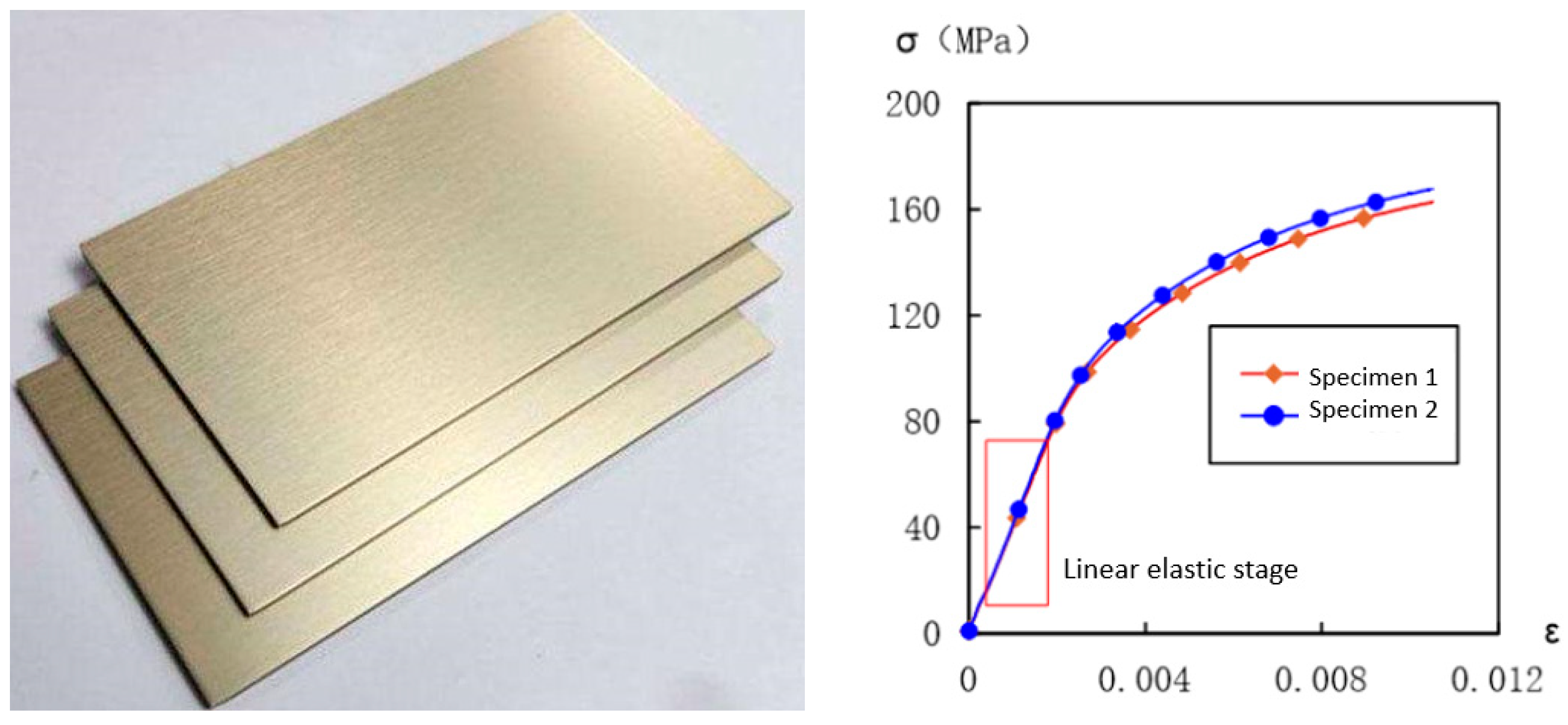
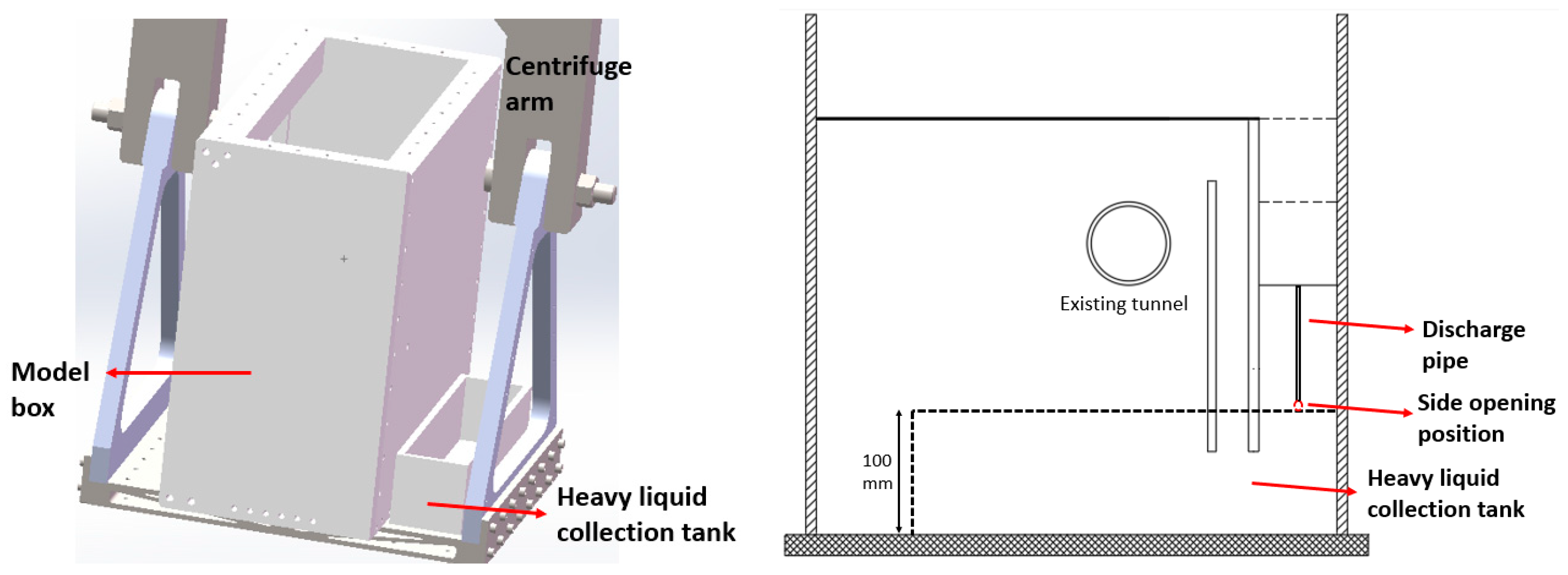
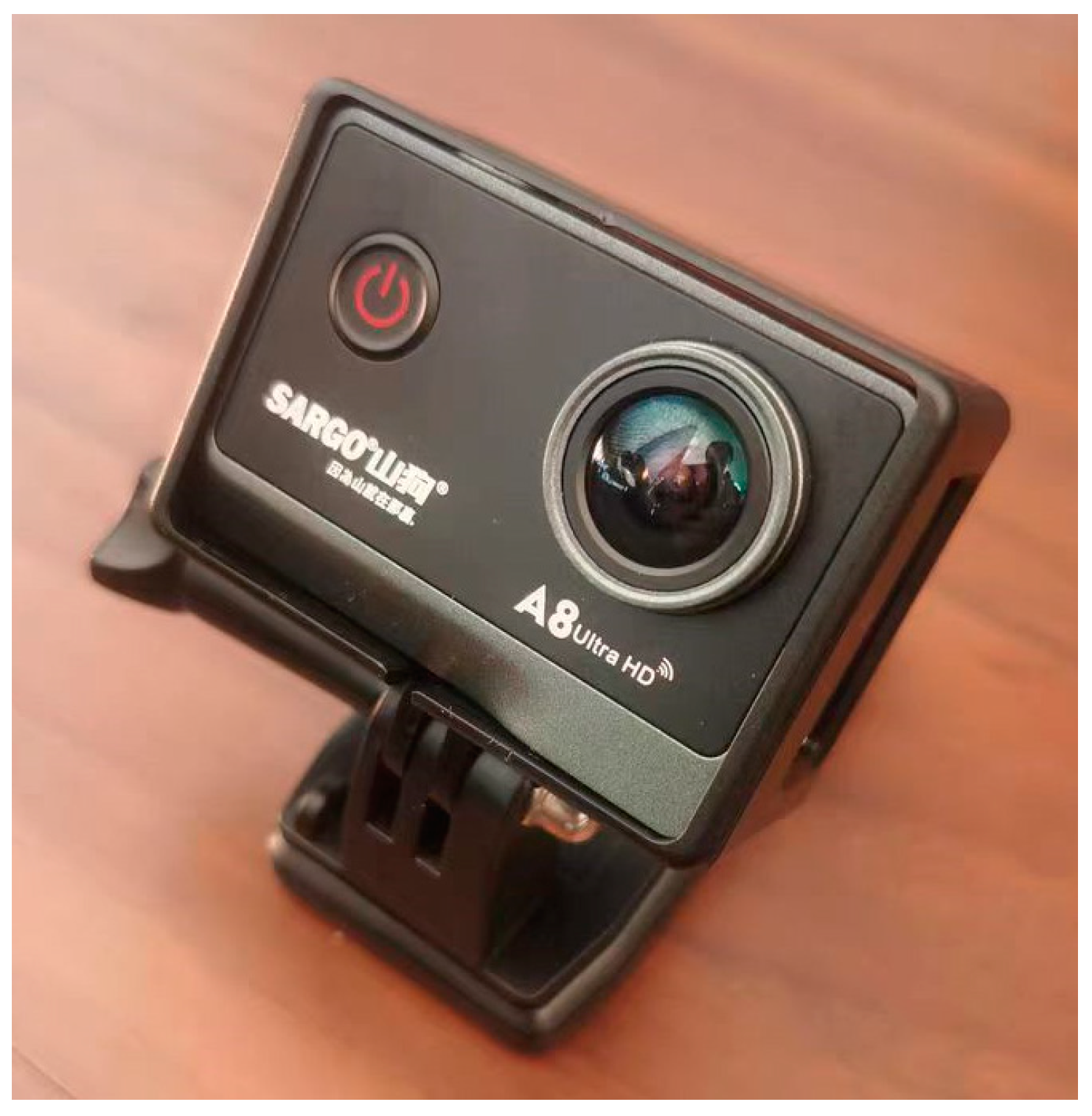

| Test Number | Buried Depth at the Top of Pile | Pile Length |
|---|---|---|
| 1 (Control group) | 0 | 0 |
| 2 | 0 | 8 |
| 3 | 0 | 16 |
| 4 | 8 | 16 |
| Eoed /MPa | E50 /MPa | Eur /MPa | m | G0 /MPa | γ0.7 | φ/(°) | ψ/(°) | Rf |
|---|---|---|---|---|---|---|---|---|
| 33.17 | 33.17 | 99.51 | 0.69 | 99.51 | 3 × 10−4 | 36.125 | 6.125 | 0.91 |
| Physical Quantity | Symbolic | Dimensional | Similarity Ratio | Physical Quantity | Symbolic | Dimensional | Similarity Ratio |
|---|---|---|---|---|---|---|---|
| Gravitational acceleration | g | L·T−2 | 50 | Stress | σ | M·T−2·L−1 | 1 |
| Geometric dimension | L | L | 1/50 | Elastic modulus | E | M·T−2·L−1 | 1 |
| Displacement | D | L | 1/50 | Bending stiffness | EI | M·T−2·L3 | 1/504 |
| Density | ρ | M·L−3 | 1 | Bending stiffness per unit length | EI unit | M·T−2·L2 | 1/503 |
| Time | T | T | 1/502 | Bending moment | M | M·T−2·L2 | 1/503 |
| Strain | ε | - | 1 | Bending moment per unit length | M unit | M·T−2·L | 1/502 |
Disclaimer/Publisher’s Note: The statements, opinions and data contained in all publications are solely those of the individual author(s) and contributor(s) and not of MDPI and/or the editor(s). MDPI and/or the editor(s) disclaim responsibility for any injury to people or property resulting from any ideas, methods, instructions or products referred to in the content. |
© 2023 by the authors. Licensee MDPI, Basel, Switzerland. This article is an open access article distributed under the terms and conditions of the Creative Commons Attribution (CC BY) license (https://creativecommons.org/licenses/by/4.0/).
Share and Cite
Wang, B.; Du, Y.; Diao, Y.; Zhao, X. Numerical Optimization of Mini Centrifuge Modelling Test Design of Excavation Unloading Influence on Existing Tunnel Controlled by Partition Piles. Sustainability 2023, 15, 8353. https://doi.org/10.3390/su15108353
Wang B, Du Y, Diao Y, Zhao X. Numerical Optimization of Mini Centrifuge Modelling Test Design of Excavation Unloading Influence on Existing Tunnel Controlled by Partition Piles. Sustainability. 2023; 15(10):8353. https://doi.org/10.3390/su15108353
Chicago/Turabian StyleWang, Bingyi, Yiming Du, Yu Diao, and Xiangyu Zhao. 2023. "Numerical Optimization of Mini Centrifuge Modelling Test Design of Excavation Unloading Influence on Existing Tunnel Controlled by Partition Piles" Sustainability 15, no. 10: 8353. https://doi.org/10.3390/su15108353
APA StyleWang, B., Du, Y., Diao, Y., & Zhao, X. (2023). Numerical Optimization of Mini Centrifuge Modelling Test Design of Excavation Unloading Influence on Existing Tunnel Controlled by Partition Piles. Sustainability, 15(10), 8353. https://doi.org/10.3390/su15108353





